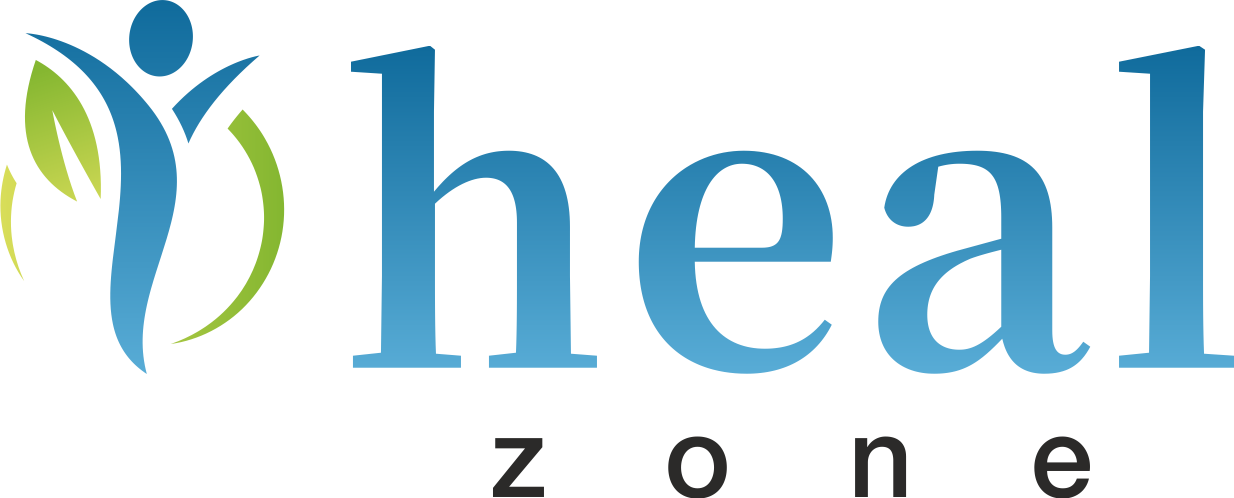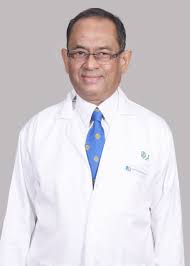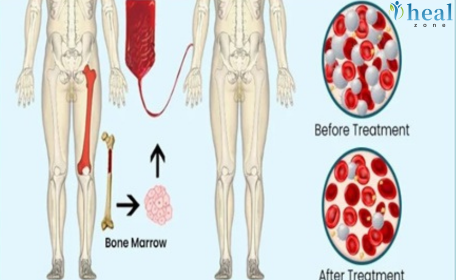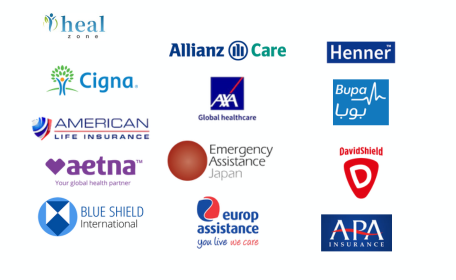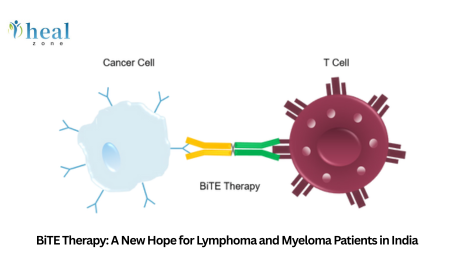Contact us
Dental Tourism: Why More Patients Are Flying India for Dental Care
By Dr. Deepanshu Siwach
21 August 2025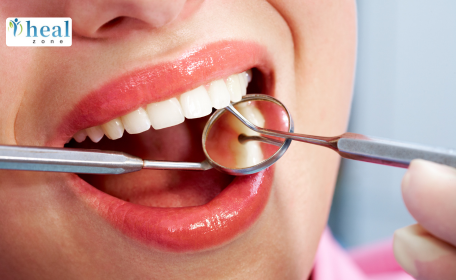
- What Exactly Is Dental Tourism?
- Why Dental Tourism Is Surging Now
- Popular Destinations (And Why They Attract Patients)
- What Drives the Cost Difference?
- Quality and Safety: How to Evaluate a Clinic
- Risks and Realities You Should Consider
- Planning Your Trip: A Practical Playbook
- How to Compare Clinics (A Checklist You Can Use)
- Myths vs. Realities
- Who Is (and Isn’t) a Good Candidate?
- What a Realistic Journey Looks Like
- Ethical and Practical Considerations
- Red Flags: When to Walk Away
- Quick Prep List (Save This)
- The Bottom Line
If you’ve noticed friends coming back from vacation with whiter smiles, straighter teeth, or even brand-new implants, you’re not imagining things. Dental tourism—traveling to India to receive dental treatment—has shifted from niche to mainstream. What once sounded risky or extravagant is now a carefully planned, cost-effective route to high-quality care for millions of people each year. In this deep dive, we’ll unpack why dental tourism is booming, where people go, what to watch out for, and how to plan a trip that puts your health (and wallet) first.
What Exactly Is Dental Tourism?
Dental tourism is the practice of traveling to another country for dental procedures, often combining treatment with a short holiday. Patients do this for everything from routine care to comprehensive makeovers. Common procedures include:
- Preventive and restorative care: cleanings, fillings, crowns, bridges
- Cosmetic dentistry: veneers, whitening, smile design
- Surgical treatments: dental implants, sinus lifts, bone grafts, wisdom tooth extraction
- Orthodontics: aligners or braces (though these often require longer-term follow-up)
The appeal usually boils down to three things: lower costs, faster access, and the promise of comparable (sometimes even superior) technology and service—particularly in clinics that specialize in international patients.
Why Dental Tourism Is Surging Now
Cost Savings—But With Nuance
The headline reason is price. In many destinations, high-volume clinics with lower overhead and labor costs can offer treatments at a fraction of what patients pay at home. Importantly, lower price doesn’t automatically mean lower quality. In thriving dental tourism hubs, competition pushes clinics to invest in modern equipment, digital workflows, and patient-experience amenities that rival upscale practices anywhere.
Faster Access to Care
In countries with long waitlists or limited insurance coverage for dentistry, patients can face months of delays for complex procedures. Dental tourism compresses that timeline. Clinics often build schedules around travelers, coordinating scans, surgeries, and lab work so treatments fit within a tight window.
Specialized, Digital-First Clinics
A not-so-secret growth driver is technology. Many clinics catering to medical travelers have embraced digital dentistry—CBCT 3D imaging, intraoral scanning, CAD/CAM-milled crowns, guided implant surgery, and 3D-printed surgical guides. These tools improve accuracy, shorten chair time, and shrink turnaround for restorations.
Global Word of Mouth
Social media, treatment-review platforms, and patient communities have demystified the process. Instead of taking a blind leap, patients browse before-and-after galleries, watch surgeon walkthroughs, and compare detailed treatment plans from multiple clinics—often getting virtual consultations before booking.
Popular Destinations (And Why They Attract Patients)
You’ll hear the same destinations come up repeatedly in patient forums and clinic directories: Mexico and Costa Rica (for North Americans), Hungary and Turkey (for Europeans), Thailand and the Philippines (for Asia-Pacific), and India (for the Middle East, Africa, and diaspora communities). What these hubs share:
- Proximity to major patient markets. Easy flight connections and short travel times for target regions.
- Concentrations of specialized clinics. Clusters build reputation—success breeds success.
- Dental labs with fast turnaround. Being near skilled labs means same-week crowns, bridges, and veneers.
- Tourism infrastructure. Hotels, translators, airport pickups, and care coordinators that smooth logistics.
You don’t need the “top five” list to choose well. What matters is the specific clinic, its team’s credentials, its case portfolio, and the fit for your treatment needs and travel constraints.
What Drives the Cost Difference?
Understanding why care is cheaper helps you judge value intelligently:
- Labor and overhead. Differences in wages, rent, and insurance cut clinic costs substantially.
- Economies of scale. High patient volumes let clinics buy materials in bulk and run in-house labs efficiently.
- Currency and policy. Exchange rates and local regulations influence pricing but don’t dictate quality.
- Competitive markets. Destination clusters court international patients with bundled packages and warranties.
The takeaway: price alone isn’t a quality indicator. It’s one variable, and it’s your job to scrutinize the rest.
Quality and Safety: How to Evaluate a Clinic
Great dental tourism is less about the destination and more about your due diligence. Here’s how to evaluate, step by step.
1) Credentials and Experience
- Dentist training and specializations. Look for post-graduate training in prosthodontics, periodontics, oral surgery, or implantology—whatever matches your needs.
- Case volume and complexity. A clinic that routinely handles full-mouth rehabilitations is better equipped for challenging cases than a generalist practice dabbling in implants.
- Professional affiliations. Memberships in reputable dental associations show ongoing education and standards.
2) Technology and Clinical Protocols
- Imaging and planning. CBCT scans, digital impressions, and guided surgery workflows reduce surprises.
- Lab capabilities. Ask who fabricates restorations (in-house vs. partner lab), turnaround times, and materials used (e.g., zirconia, lithium disilicate).
- Infection control. Request written sterilization protocols. Look for single-use items where appropriate and documented autoclave cycles.
3) Transparency and Communication
- Written treatment plans. You should get a detailed plan with tooth-by-tooth recommendations, materials, timelines, and total cost—including contingencies.
- Before-and-after documentation. Real, consented patient cases with clear photos and notes—not stock imagery.
- Language and responsiveness. You need a point person who answers quickly and plainly. If communication is sloppy before you pay, it won’t improve after.
4) Policies, Warranty, and Aftercare
- Complication policies. How do they handle infections, failed implants, or remakes?
- Warranty details. Timeframes for crowns/veneers and implants vary. Understand what voids coverage.
- Coordination with local dentists. Some clinics maintain networks for follow-up care where you live.
Risks and Realities You Should Consider
No dental treatment is risk-free, and travel adds complexity. Make space for these realities:
- Continuity of care. Complex cases often need adjustments after you go home. Plan for local follow-up and factor potential extra trips into your budget.
- Compressed timelines. Rushing multiple surgeries into a short stay can stress healing. Implants, in particular, may require staged visits months apart.
- Legal and regulatory differences. Malpractice frameworks and patient protections differ by country. You’re trading some legal leverage for lower cost and speed.
- Medical complexity. If you have significant health issues (cardiovascular disease, bleeding disorders, immunosuppression), you may be safer treating closer to home, ideally with hospital support nearby.
Dental tourism works best when the clinical plan fits the travel plan—not the other way around.
Planning Your Trip: A Practical Playbook
Treat this like a project. Start with an outcome—“I want to restore function and aesthetics on my upper arch”—then reverse-engineer the logistics.
1) Pre-Trip Consults and Records
- Virtual consults. Share recent x-rays, CBCTs, and photos for preliminary planning. Many clinics offer complimentary assessments.
- Second opinions. Get at least two independent plans. If they disagree wildly, ask why; the differences reveal assumptions about your bite, bone, or risk tolerance.
- Medical clearance. If you have health conditions, get clearance from your physician and disclose all medications (especially blood thinners).
2) Timeline and Treatment Staging
- Implants. Typical protocol: extraction (if needed), bone graft or sinus lift, implant placement, healing (3–6 months), then final crown. Some patients qualify for immediate implants and provisional teeth—but not everyone.
- Veneers/crowns. Usually 5–10 days, including prep, temporaries, try-ins, and delivery. Build in a buffer day for adjustments.
- Orthodontics. Clear aligner therapy can begin abroad but generally requires months of follow-up—less ideal for one-off trips.
3) Travel Logistics
- Schedule buffers. Don’t fly out the same day your final restorations are seated. Keep 24–48 hours for tweaks or unexpected delays.
- Accommodation choices. Stay close to the clinic. Elevators over stairs, quiet rooms for post-op rest, and reliable transport are worth it.
- Companion or solo? Bringing someone is helpful after sedation or surgery. If solo, arrange clinic transport and check-ins.
4) Budgeting Beyond the Headline Price
- Hidden costs. Add flights, hotels, local transport, meals, extra scans, medication, and potential follow-up trips.
- Insurance. Your standard travel policy may exclude medical procedures. Consider medical travel insurance that includes complications coverage.
- Payment methods. Confirm accepted currencies, cards vs. wire transfers, and any surcharges.
5) Post-Op Care at Home
- Find a local dentist for maintenance. Share your records (x-rays, notes, implant brand, lot numbers).
- Diet and hygiene. Follow instructions strictly—soft foods, chlorhexidine rinses if prescribed, no smoking, and diligent cleaning around implants.
- Protect your work. Nightguards can safeguard new crowns or veneers from clenching and grinding.
How to Compare Clinics (A Checklist You Can Use)
Use this framework to score contenders:
- Team: Lead dentist’s specialty, years in practice, case volume for your procedure.
- Evidence: Before/after galleries with similar cases, unedited photos, and verifiable patient testimonials.
- Diagnostics: Availability of CBCT, digital impressions, smile design software.
- Lab Quality: In-house vs. partner lab, material choices, turnaround times, remakes policy.
- Sterilization: Written protocols; ask to see the sterilization area if you’re unsure.
- Treatment Plan: Tooth-by-tooth plan, materials, timelines, fees, and contingencies in writing.
- Warranty: Length, coverage, exclusions, and how claims are handled from abroad.
- Communication: Responsiveness, language proficiency, and a single coordinator who knows your case.
- Logistics: Airport pickup, hotel partnerships, sedation options, emergency plans, and clinic hours.
- Fit: Do you feel heard? Are risks and alternatives explained? Pressure tactics are a red flag.
Myths vs. Realities
“Cheaper means lower quality.”
Sometimes, but not necessarily. Price differences often reflect overhead, not expertise. The real quality signal is transparent planning, evidence of similar cases, and robust aftercare policies.
“It’s unsafe to get dental work abroad.”
Safety varies by clinic, not by country line. Many clinics operate to international standards, invest in top-tier equipment, and follow strict protocols. Your due diligence is the safety multiplier.
“Dental tourism is only for cosmetic makeovers.”
Cosmetic cases are popular, but many travelers seek implants, full-mouth reconstructions, or complex bite rehabilitation to restore function and health.
“Everything can be done in one trip.”
Not always. Biologic healing (especially for implants and grafts) takes time. If a clinic promises instant results that ignore these realities, be skeptical.
Who Is (and Isn’t) a Good Candidate?
- Good candidates often have multiple restorative needs, are otherwise healthy, and can accommodate either one longer visit or two staged visits. They’re comfortable coordinating care and following detailed instructions.
- Proceed cautiously if you have uncontrolled systemic disease, complex occlusion or TMJ issues, or a history of failed implants. These cases may require slow, multidisciplinary care close to home—or a destination clinic attached to a hospital with extended timelines.
What a Realistic Journey Looks Like
Here’s a sample path for a patient needing several implants and crowns:
- Month 0–1: Gather records, book virtual consults with two clinics, compare plans and quotes, choose the clinic.
- Month 1–2: Fly for visit #1. Extractions if needed, bone grafts, and implant placement with provisional solutions. Stay 7–10 days.
- Month 3–6: Healing period at home. Remote check-ins, local hygiene visits, and any minor issue management.
- Month 6–7: Visit #2. Final scans/impressions, try-ins, and definitive crowns/bridges. Allow 7–10 days with a buffer for adjustments.
- Month 8+: Nightguard, periodic maintenance, and warranty follow-up if needed.
Note the buffers and the importance of local support during healing.
Ethical and Practical Considerations
- Sustainable choices. Choose clinics that treat staff fairly, manage biomedical waste properly, and invest in community oral health.
- Informed consent. Make sure you understand benefits, alternatives, and risks—especially for extractions and implants that permanently alter anatomy.
- Records portability. Insist on full documentation: pre- and post-op photos, x-rays, implant brand/size/lot, and material certificates for prosthetics.
Red Flags: When to Walk Away
- Vague plans and “guaranteed” smile transformations without diagnostics
- Pressure to pay deposits before you see a written treatment plan
- No mention of complications, healing timelines, or warranty conditions
- Stock photos posing as patient cases
- Unwillingness to share lab and materials information
Quick Prep List (Save This)
- Up-to-date dental records (x-rays, CBCT, medical history, medication list)
- Two opinions and a consolidated written plan
- Confirmed dates with buffer days on both ends
- Accommodation within easy reach of the clinic
- Post-op supplies (pain relief per guidance, soft foods, ice packs, saline rinse)
- Travel and medical complications insurance information
- A local dentist ready for follow-up care
- Copies of all consents, warranties, invoices, and lab/materials details
The Bottom Line
Dental tourism isn’t a shortcut, it’s a different route. For the right patient, it can deliver transformative results at an accessible price, with modern technology and attentive service. But the success stories you see online share common threads: meticulous planning, realistic timelines, transparent clinics, and diligent aftercare. If you approach the process like a well-researched project—comparing plans, verifying credentials, and budgeting for the whole journey—you can step off the plane not just with a brighter smile, but with the confidence that it’s built to last.
Contact us
Written by
Doctor of Pharmacy (PharmD)
Reviewed by
Frequently Asked Questions
India offers world-class dental care at a fraction of the cost compared to the US, Europe, or Middle East, while maintaining international treatment standards.
Patients often save 50–70% on procedures like implants, crowns, or cosmetic dentistry—even after including travel and accommodation.
Common treatments include:
- Dental implants
- Cosmetic dentistry (veneers, whitening, smile design)
- Root canals & crowns
- Full-mouth rehabilitation
- Orthodontics (aligners, braces)
Yes. Up to two attendants can accompany you on a medical attendant visa. But patient can come alone.






Latest Blogs
Reviews
I am Fadel Abu Muhammad from Tal Afar, Iraq My father had a brain tumor. We traveled to India to Accord Specialty Hospital, New Delhi, through a resident professor, Muhammad, Dr. Vikram, who called for a laparoscopic tumor removal operation. Thank God I thank the translator, the doctor, and all the hospital staff.
Posted On
I am Muhammad Reda from Baghdad, Iraq I was suffering from weakness in my left hand. I underwent tests and it turned out that I had a brain tumor. The translator, Muqeem Muhammad, contacted us and we traveled to India. I had a neuronavigation procedure performed by Dr. Sandeep Vashya Praise be to God, the operation was completed successfully on the computer At Fortis Hospital New Delhi I thank the translator and the doctor
Posted On
All our gratitude and appreciation to the wonderful translator Mohammed Muqeem, who was truly a great support and companion during our journey for my mother’s treatment in India. He was extremely helpful, deeply understanding of all our needs, patient, and dedicated in his work, which eased a lot of the hardship and challenges we faced being away from home. His presence with us was not just about translating words but about offering real human support in every situation and every moment. May God bless him and reward him greatly for all he has done for us.
Posted On
I'm Emad Mohammed Khadir from Iraq. I was suffering from cirrhosis and liver cancer. I came to Fortis Hospital in India to see Dr. Ankur Bahil, a consultant oncologist, with the help of our translator, resident professor Mohammed Al Hindi. Thank God, we received our chemotherapy doses. The doctor and all the hospital staff were very kind and helpful. May God bless them all. Thank you.
Posted On
I am Redha Fadel from Nasiriyah, Iraq. I had a bone tumor, osteosarcoma. I traveled to India to see Dr. Ankur, a cancer specialist at Fortis Hospital, with the help of Hill Zone Medical Tourism Company, Professor Muqeem Muhammad Al Hindi. I thank you for your humanity and services.
Posted On
Peace be upon you. I am from Iraq. My brother is suffering from a tumor in his left thigh (osteosarcoma). We came to Al-Nahda for treatment. We stayed at Fortis Hospital for two months. We are now going to Iraq and will return to India to complete the treatment and the joint replacement surgery. I would like to thank the polite Indian translator, Muqeem Mohammed Al-Hindi. He was our brother before he was a translator and he helped us a lot with my brother's illness. Thank you, Muqeem. Thank you, Fortis Hospital. Thank you, Dr. Ankur.
Posted On
Peace be upon you, I'm from Iraq. My name is Majid Mazhar Kazim. My brother was suffering from tumors, so we contacted a resident professor, Muhammad Al-Hindi, and we sent him medical reports. He received us from the airport in New Delhi. I highly recommend him to Iraqi patients. He is helpful and well-mannered. He didn't hold back on us and didn't leave us alone from the first day until the last. He also took us to the airport. I thank them all.
Posted On
I am Mohammed Kazim from Iraq, from Babylon. My brother Mushtaq was suffering from meningitis. We came to India to Fortis Hospital through our resident professor, Mohammed, the director of Hill Zone Medical Services. I thank them for their kind treatment and translation. It was an enjoyable and fruitful trip. Praise be to God.
Posted On
I am from iraq tilafar, i came to India for my treatment an immune disease, i am thankful to Mr Muqeem and hospital staff, Marego Asia Hospital
Posted On
I am from Iraq. My son was suffering from Hirayama disease. I called Heal Zone, and they arranged our treatment journey. Now my son is in good health, and his finger movement has come back.
Posted On
